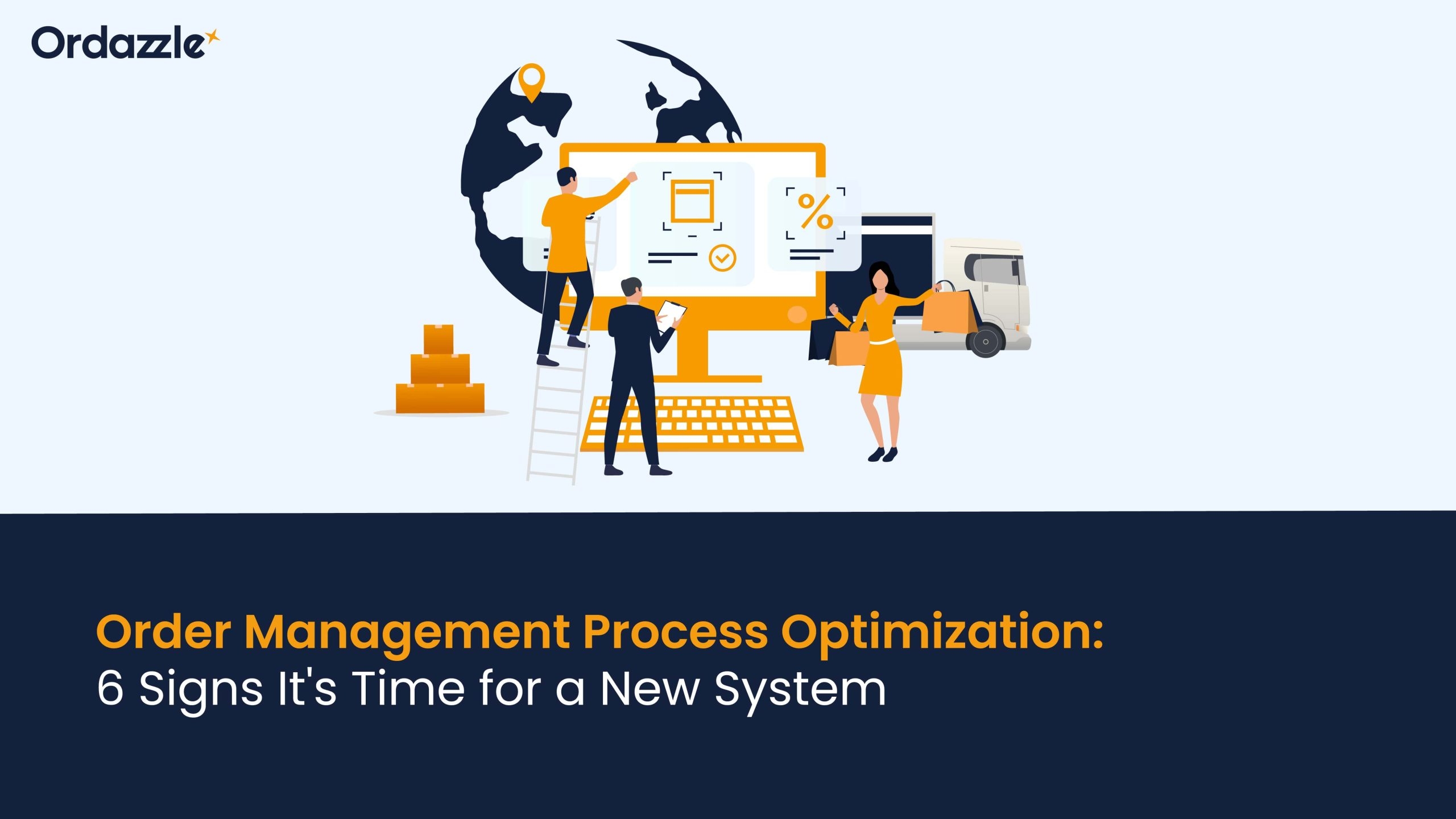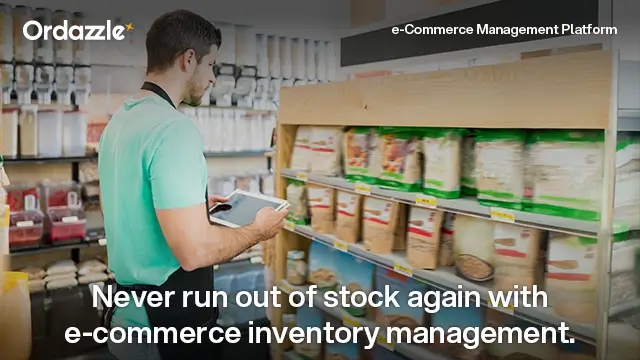Order Management System Optimization: 6 Signs It’s Time for a New Solution

Business success hinges on having the right tools to support growth and efficiency. As your business expands, managing orders, inventory management, and customer data becomes more complex. While the manual order management process and basic spreadsheets may suffice initially, they can become inadequate over time. This is where a modern OMS order management system proves invaluable.
However, evaluating whether your current OMS order management system still meets your evolving needs is crucial. Is it flexible enough to accommodate your business’s growth? Does it seamlessly integrate with other software and systems? If not, then it’s time to consider upgrading to a more robust order management solution.
In this blog, we’ll outline six clear signs indicating that your current OMS order management system is no longer up to par for your e-commerce order management business. We’ll also discuss the necessary evaluations to determine whether switching to new order management software is warranted.
Order Management System Indicators for the Replacement Process:
There comes a pivotal moment in online retail when upgrading or replacing your e-commerce order management system is not just an option but an imperative move. Here are the top indicators that suggest it’s time to consider getting a new OMS order management system:
- Managing Multiple Inventory Locations
As shoppers become more tech-savvy, expanding your e-commerce order management business into a multichannel or omnichannel organization is essential. However, juggling platforms like online marketplaces, physical stores, and warehouses can quickly become chaotic. This signals the need for a system that seamlessly integrates and manages all your sales channels in one place.
As your business expands, manually handling orders becomes increasingly burdensome and error prone. That’s where a reliable OMS order management system comes in. By automating the order management process, an OMS order management system reduces errors and simplifies the process.
If you’re feeling overwhelmed by order volume, it’s a clear sign that investing in an OMS order management system could significantly improve your business operations.
- Inventory Management Woes:
Do you constantly need help with stockouts or find it hard to keep tabs on inventory management across various sales channels? The lack of inventory visibility affects not only you but also your distributors and manufacturers. Distributors may miss out on inventory at different supplier warehouses, affecting delivery timelines and customer satisfaction.
Similarly, manufacturers might need help to provide real-time updates on inbound inventory, leading to delays in fulfilling orders.
An e-commerce order management system is the solution you need. It offers real-time insights into your inventory management levels, helping you maintain optimal stock levels and avoid running out of products. With centralized inventory management, an OMS order management system ensures accuracy across all your sales channels, whether your website or other online marketplaces.
A modern OMS order management system provides end-to-end visibility across the supply chain, tracking orders from request to fulfillment. Insights from the system help improve planning and execution, while automated workflows speed up order management process processing. In essence, an e-commerce order management system empowers you to take control of your inventory management and enhance overall efficiency in fulfilling customer orders.
- Can’t meet customer expectations for e-commerce experiences
Are your customers voicing dissatisfaction due to delayed shipments or order inaccuracies? Manual order processing can lead to delivery delays and mistakes, resulting in dissatisfied customers and negative reviews. Efficient order fulfillment is vital for providing top-notch e-commerce experiences. Slow delivery processes may drive customers to competitors. Thus, if your order fulfillment process hinders delivery efficiency, it’s time to upgrade your order management system.
An OMS order management system automates shipping processes, ensuring faster and more accurate order fulfillment. Features like batch processing and address verification significantly reduce shipping times, enhancing customer satisfaction. Similarly, handling returns and exchanges manually poses challenges. An OMS order management system simplifies this process by offering a centralized platform, saving time and reducing errors. Moreover, if you’re overspending on your current system, seek omnichannel solutions that streamline processes, update in real-time, and automate tasks cost-effectively. These solutions enable faster and more efficient delivery, even during peak periods. Additionally, insights gained from these systems can improve decision-making and provide transparency across the supply chain.
- You’re unable to scale your business.
Is your business struggling to keep up with growth? With growth comes increased order volumes and complexity, placing greater demands on your order management system. Your current OMS order management system may falter as sales surge, slow down, or experience glitches. This indicates the need for a more scalable solution.
Look for a modern cloud-based OMS order management system that seamlessly accommodates growth, ensuring smooth order management process even during rapid expansion. Such systems offer flexibility, scalability, and robust performance, enabling your business to thrive amidst evolving demands and opportunities.
- Your OMS order management system is not connected to all the platforms you work with
Seamless integrations are crucial in today’s digital and omnichannel retail landscape. Suppose your current OMS order management system needs to catch up with continuous integrations across various systems like Customer Relationship Management (CRM) software, Enterprise Resource Planning (ERP) systems, or other omnichannel solutions. In that case, you might be facing data silos that hinder your decision-making process.
Moreover, an OMS order management system isn’t just about processing orders; it’s about gaining valuable insights into your business performance. Whether tracking sales trends or understanding customer behavior, an OMS order management system offers robust reporting and analytics tools that provide the visibility necessary to identify growth opportunities and streamline operations. Without this clarity, you could be navigating your business blindly, missing out on crucial insights that could propel your success.
- Your team depends on too many manual tasks.
Suppose your team spends excessive time on manual duties like order management process processing, inventory management, or data entry. In that case, it’s a clear sign that your current OMS order management system might need to be updated. Embracing automation is crucial for efficiency and minimizing the chances of errors. Upgrading to a modern OMS order management system with advanced automation features can save your team time and improve accuracy.
A multi-enterprise OMS order management system streamlines order management process and integrates AI-driven insights for informed decision-making, especially with complex product configurations and diverse fulfillment types. Consolidating production schedules, sourcing options, and inventory management availability across entities eliminates guesswork from delivery estimates, reducing errors, enhancing customer service, and mitigating business risks.
Defining the Order Management System (OMS) Before Implementing a New One
Before replacing your e-Corder management system, define clear transition goals to guide decisions and resource allocation. These objectives serve as a roadmap, ensuring alignment with broader business objectives for immediate needs and long-term growth.
Regularly assess your current OMS order management system to maintain alignment with objectives, enhancing the order management process, customer experiences, and operational efficiency. Conversely, an outdated OMS order management system may hinder growth and lead to missed opportunities. Conduct a comprehensive performance audit to evaluate your OMS order management system’s features, speed, accuracy, configurations, and integration capabilities, identifying areas for improvement.
Conclusion
In contemplating the transition to a robust OMS order management system, it’s essential to heed the six signs outlined above. Shifting to an order management system (OMS) can streamline your operations, enhance efficiency, and elevate the overall customer experience. Moreover, selecting a solution that specifically addresses your business’s pain points is vital, empowering your team to excel. By choosing a system that aligns with your needs, you can ensure smoother operations and facilitate growth without unnecessary obstacles.
When considering an OMS order management system for your e-commerce venture, look no further than Ordazzle. As a leading e-commerce solutions company, Ordazzle offers a comprehensive OMS order management system with automated order management process processing, real-time inventory management, and advanced reporting capabilities.
Looking to replace your existing order management systems? Contact our experts today! Book A Demo


